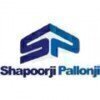Filter interviews by
Fabwell Construction, Larsen And Tourbo Hydrocarbon Engineering Graduate Engineer Trainee (Get) Interview Questions and Answers
Fabwell Construction, Larsen And Tourbo Hydrocarbon Engineering Graduate Engineer Trainee (Get) Interview Experiences
1 interview found

A comparatively easy aptitude test including questions from our technical domain was asked.
(2 Questions)
- Q1. Subject related questions were asked. It was a 3 panel interview along with the HR.
- Q2. An extempore round was also there.
Interview Preparation Tips
Top trending discussions






Interview questions from similar companies

Graduate Engineer Trainee (Get) Interview Questions & Answers
L&T Constructionposted on 13 Jan 2025
General aptitude and domain-specific questions.
(3 Questions)
- Q1. Self introduction
- Q2. What are the steps in pcb design process.
- Q3. What is demux and mux?

Graduate Engineer Trainee (Get) Interview Questions & Answers
Alstom Transportationposted on 20 Aug 2024
I applied via Campus Placement and was interviewed in Jul 2024. There were 4 interview rounds.
All aptitude, verbal questions
Current affair topics
(2 Questions)
- Q1. Projects based question
- Q2. Favourite subject related questions..decent knowledge on one's core is enough
(2 Questions)
- Q1. Achievements and regrets
- Q2. Family and educational background
Interview Preparation Tips

Graduate Engineer Trainee (Get) Interview Questions & Answers
Larsen & Toubro Limitedposted on 3 Jan 2025
I applied via LinkedIn and was interviewed in Dec 2024. There were 2 interview rounds.
Just Normal aptitude and question from domain
(2 Questions)
- Q1. Give introduction
- Ans.
I am a highly motivated and experienced professional with a strong background in marketing and sales.
Over 10 years of experience in marketing and sales
Proven track record of exceeding sales targets
Strong communication and negotiation skills
Expertise in developing and implementing marketing strategies
Proficient in market research and analysis
- Q2. Your hobbies
- Ans.
My hobbies include reading, hiking, and painting.
Reading: I enjoy diving into a good book and exploring different genres.
Hiking: I love spending time outdoors, exploring nature trails and challenging myself physically.
Painting: I find relaxation and creativity in expressing myself through art.
Interview Preparation Tips

Graduate Engineer Trainee (Get) Interview Questions & Answers
Tata Technologiesposted on 10 Jun 2024
(2 Questions)
- Q1. Various designs considerations
- Ans.
Design considerations play a crucial role in the success of a project or product.
Consider user experience and usability
Think about scalability and flexibility
Ensure security and privacy measures are in place
Take into account cost and resource constraints
- Q2. Type of defects in plastic
- Ans.
Common defects in plastic include bubbles, warping, sink marks, and flash.
Bubbles: trapped air pockets in the plastic
Warping: deformation of the plastic due to uneven cooling
Sink marks: depressions on the surface caused by uneven cooling or thick sections
Flash: excess material around the edges of the mold
Cad test (surfacing and part modelling)
Interview Preparation Tips

Graduate Engineer Trainee (Get) Interview Questions & Answers
Saint-Gobainposted on 27 Aug 2024
Technical Aptitude on java , .net , and sql
Generative Al . time was 8 minutes and 2 minutes for thinking

Graduate Engineer Trainee (Get) Interview Questions & Answers
Megha Engineering & Infrastructuresposted on 20 Aug 2024
I applied via Campus Placement and was interviewed in Feb 2024. There were 2 interview rounds.
(2 Questions)
- Q1. What is curing ?
- Ans.
Curing is the process of maintaining adequate moisture and temperature for a specific period of time to allow concrete to achieve its desired strength and durability.
Curing helps in preventing the loss of moisture from the concrete, which is essential for hydration to occur.
Proper curing enhances the strength, durability, and overall quality of the concrete.
Common curing methods include water curing, steam curing, and ...
- Q2. What are the dimensions of test cube?
- Ans.
The dimensions of a test cube are typically 150mm x 150mm x 150mm.
Standard dimensions are 150mm x 150mm x 150mm
Used for testing compressive strength of concrete
Can vary based on specific testing requirements
(2 Questions)
- Q1. Explain yourself ?
- Ans.
I am a dedicated and hardworking individual with a passion for engineering and problem-solving.
I recently graduated with a degree in engineering from XYZ University.
I have completed internships at ABC Company where I gained hands-on experience in project management and design.
I am proficient in CAD software and have strong analytical skills.
I am a team player and enjoy collaborating with others to find innovative solut
- Q2. Draw a plan with structural details?
- Ans.
I would draw a plan with structural details including dimensions, materials, and load-bearing elements.
Start by sketching the overall layout of the structure
Include dimensions for each component and the overall structure
Label materials to be used for each element (e.g. steel beams, concrete columns)
Highlight load-bearing elements such as columns and beams
Consider factors like wind load, seismic activity, and live loads
Interview Preparation Tips

Graduate Engineer Trainee (Get) Interview Questions & Answers
Shapoorji Pallonji Groupposted on 7 Feb 2024
I applied via Campus Placement and was interviewed in Jan 2024. There were 3 interview rounds.
It consists of 25 questions within 25 mins
About some topics like technology on jobs
(2 Questions)
- Q1. What is the full form of CPM and PERT?
- Q2. What are the intersted subjects
Interview Preparation Tips
- Mechanical Engineering

Graduate Engineer Trainee (Get) Interview Questions & Answers
KEC Internationalposted on 9 Mar 2024
(2 Questions)
- Q1. How many brickes need in 1m3
- Ans.
The number of bricks needed in 1m3 depends on the size of the bricks being used.
The number of bricks in 1m3 will vary based on the size of the bricks. Standard brick size is 190mm x 90mm x 90mm.
For standard size bricks, approximately 500 bricks are needed in 1m3.
To calculate the number of bricks needed, divide the volume of 1m3 by the volume of one brick.
- Q2. Fos for concrete
- Ans.
Fos is a type of admixture used in concrete to improve its workability and durability.
Fos is a water-reducing admixture that helps in reducing the water content in concrete mixtures.
It improves the workability of concrete, making it easier to place and finish.
Fos also enhances the durability of concrete by reducing permeability and increasing strength.
Examples of Fos for concrete include polycarboxylate-based admixture

(1 Question)
- Q1. Core questions related to iron and steel making
Interview Preparation Tips
Fabwell Construction, Larsen And Tourbo Hydrocarbon Engineering Interview FAQs
Tell us how to improve this page.
Interview Questions for Popular Designations
- Graduate Apprentice Trainee Interview Questions
- Graduate Apprenticeship Trainee Interview Questions
- Graduate Trainee Interview Questions
- Graduate Engineer Interview Questions
- Production Graduate Engineer Trainee Interview Questions
- Graduate Student Interview Questions
- Graduate Apprentice Interview Questions
- Post Graduate Engineer Trainee [pget] Interview Questions
- Show more
Graduate Engineer Trainee (Get) Interview Questions from Similar Companies

Larsen & Toubro Limited

L&T Construction

Tata Projects

Megha Engineering & Infrastructures
- Home >
- Interviews >
- Fabwell Construction, Larsen And Tourbo Hydrocarbon Engineering Interview Questions >
- Fabwell Construction, Larsen And Tourbo Hydrocarbon Engineering Graduate Engineer Trainee (Get) Interview Questions







